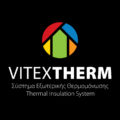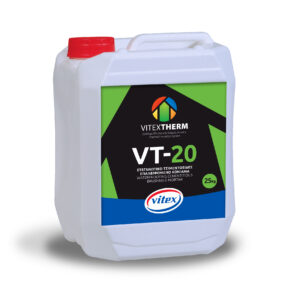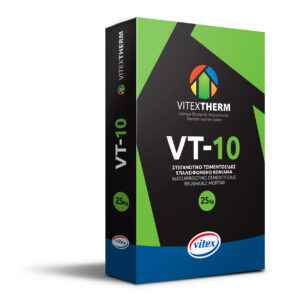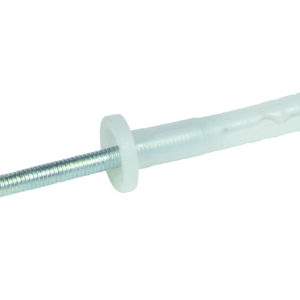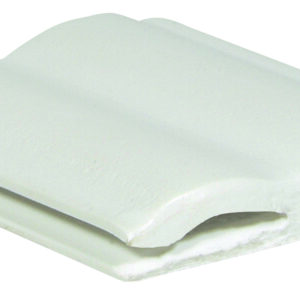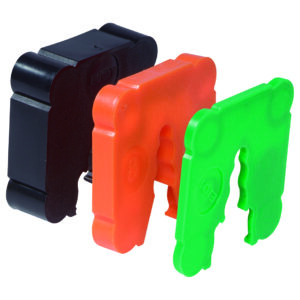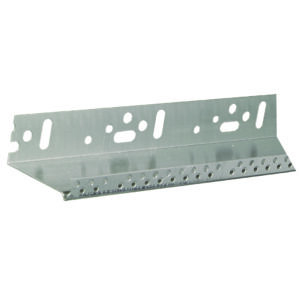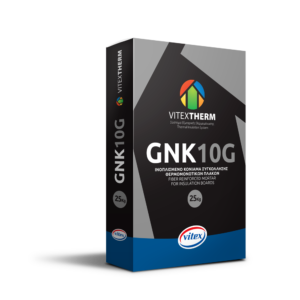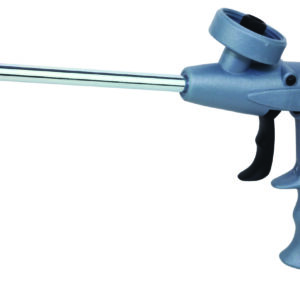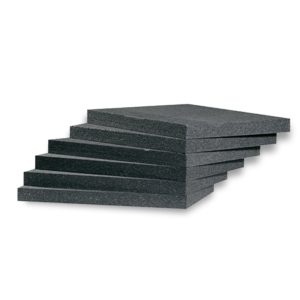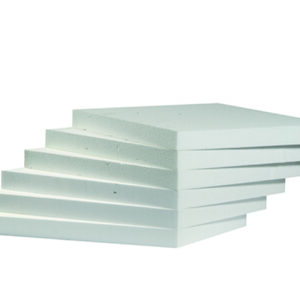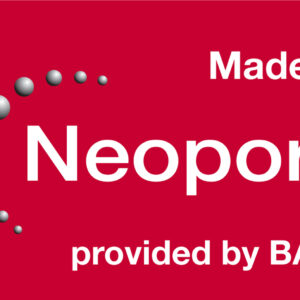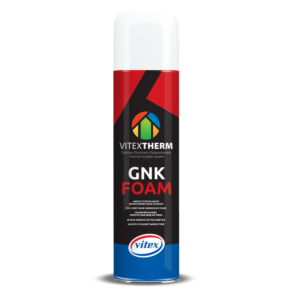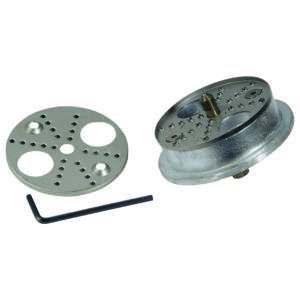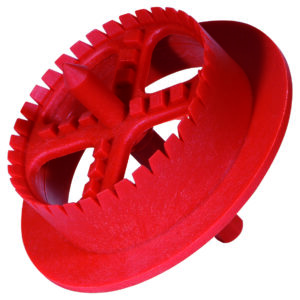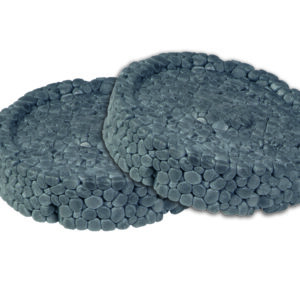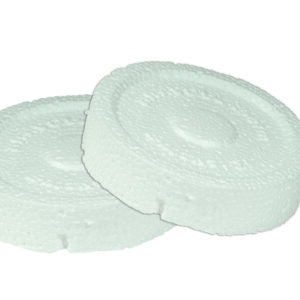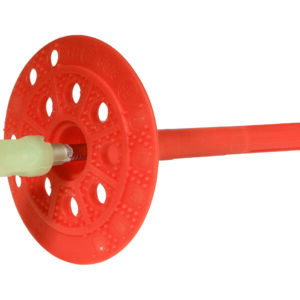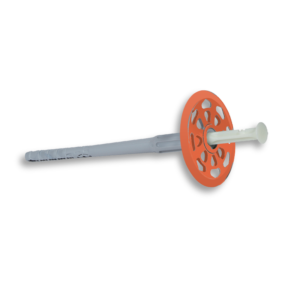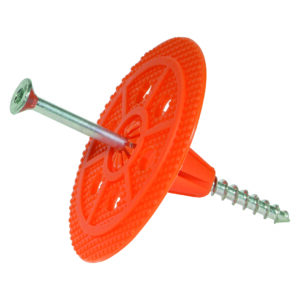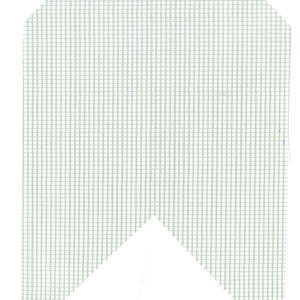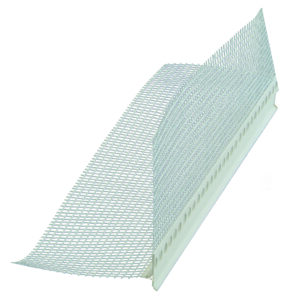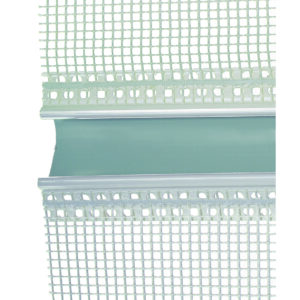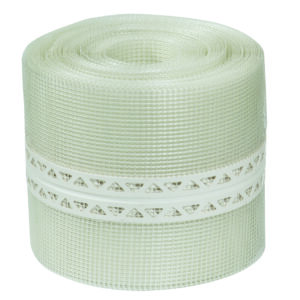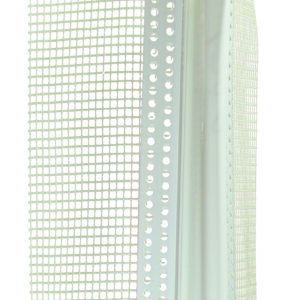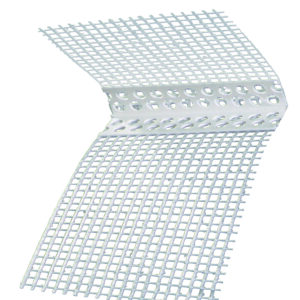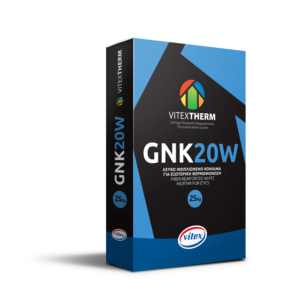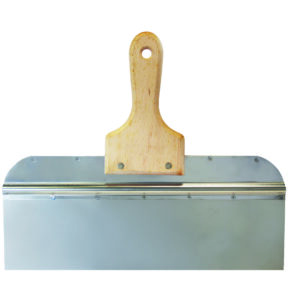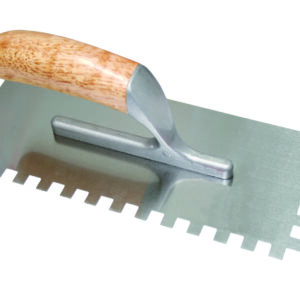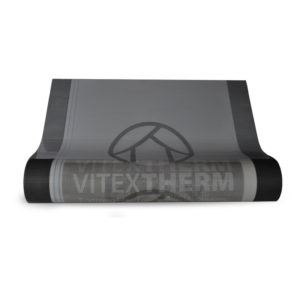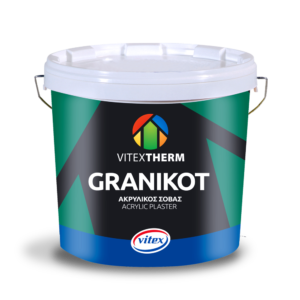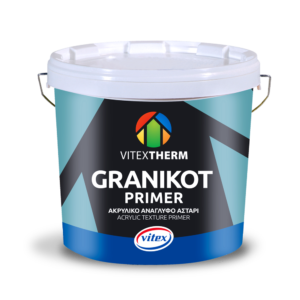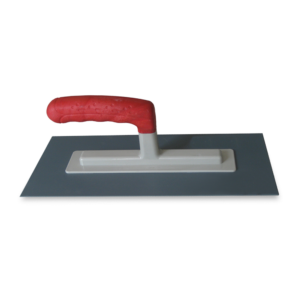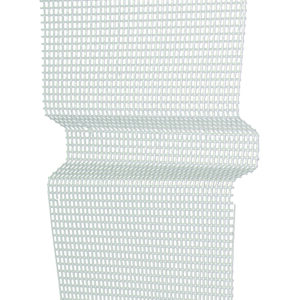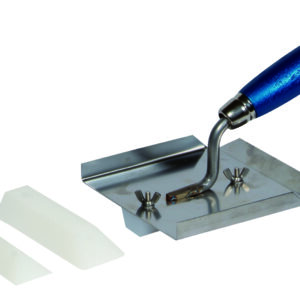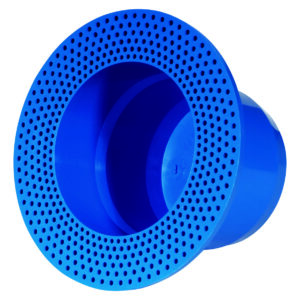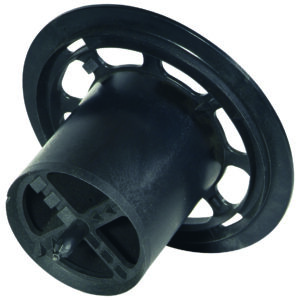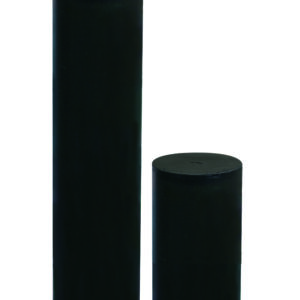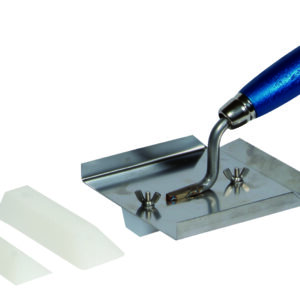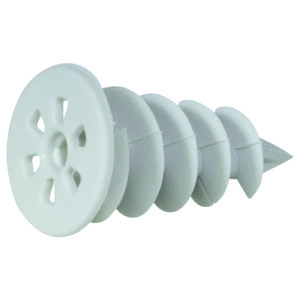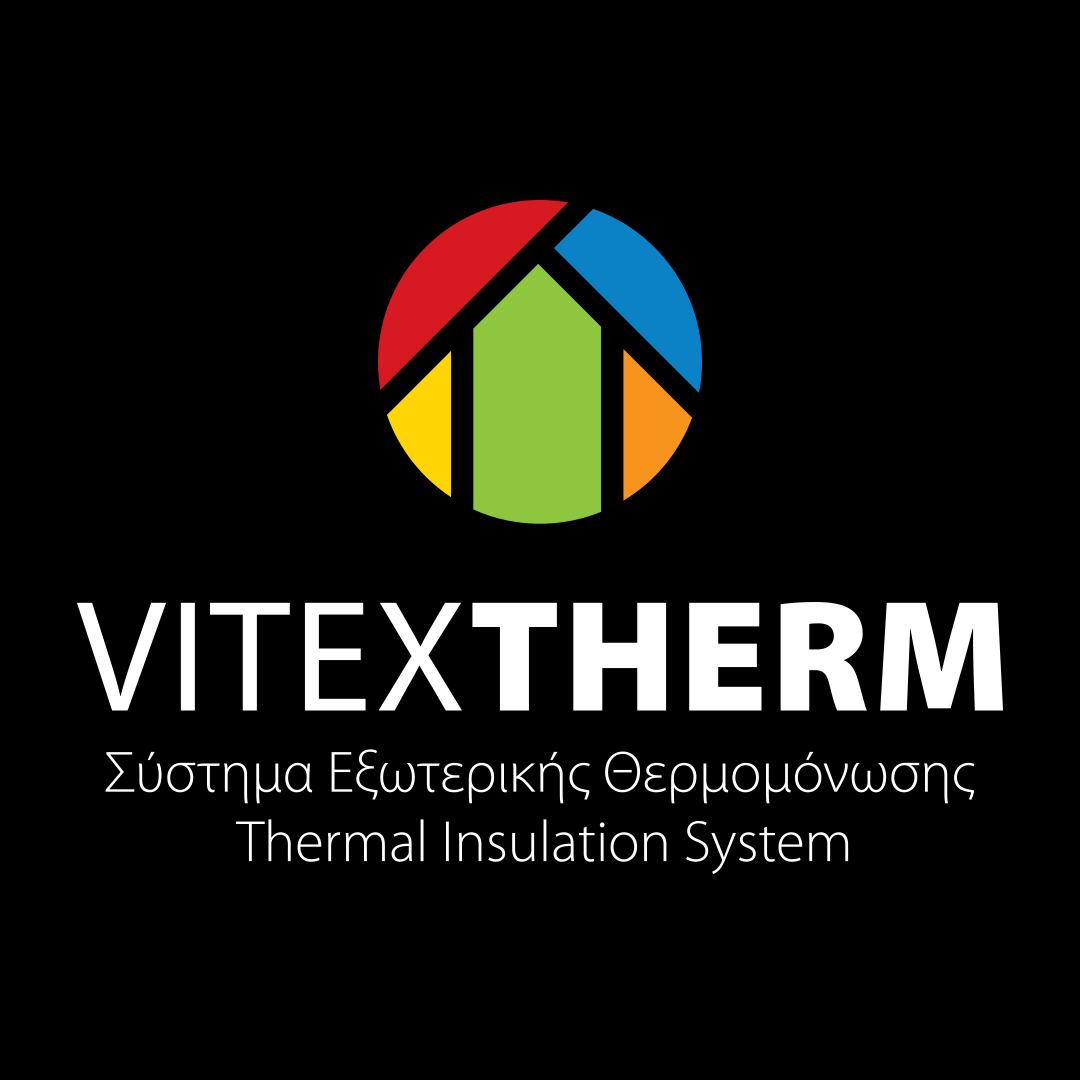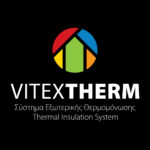WORK STAGES
Work Prep
The VitexTherm external thermal insulation system can be installed on a variety of new substrates (such as concrete, brick, cement board, OSB) or existing substrates (including painted or plastered surfaces). Before starting to install the VitexTherm external thermal insulation system certain steps must be taken, depending on the type of building structure.
NEW STRUCTURES
For new buildings, the following preparatory steps need to be taken:
- Check the condition of the substrate, which must be clean, dry and relatively smooth and flat. If there are substantial irregularities in surface flatness that cannot be covered by different thicknesses of polystyrene, then the surface needs to be plastered first.
- The window and door sills should be in position and extend outwards beyond the final external thermal insulation layer.
- Preliminary window casings (if used) should already have been fitted.
- The electrical and plumbing installations on facades should have been completed.
- Works for roof construction or waterproofing of rooftop apartments.
- Cement mortar works on balconies and waterproofing to combat rising damp should be finished beforehand.
OLD/EXISTING BUILDINGS
For existing buildings, the following preparatory steps need to be taken:
- Check the condition of the substrate, which must be clean, dry and relatively smooth and flat, with no friable areas. If there are substantial irregularities in surface flatness that cannot be covered with polystyrene, then the surface needs to be plastered first.
- Necessary repairs to friable patches on the substrate layer must have been made.
- The passage points of other structural elements must be inspected and repaired as necessary (aluminum, windows, sills).
- Electrical and plumbing installations must be brought to the level of the new final surface to be created, after installation of the VITEXTHERM system.
- The VitexTherm external thermal insulation system should not be installed in temperatures less than 5oC or higher than 35oC.
- If the surface is damp due to bad weather, the substrate layer should be completely dry before work continues.
-
For advice on managing potential technical problems arising with regard to exterior facades due to installation of VitexTherm external thermal insulation, you can contact the company’s technical department of the company to work out the optimum technical and financially appropriate solution.
High waterproof sealing zone
- A high waterproofing zone is first marked out around the perimeter of the structure at a height of up to 50 cm above ground level.
- Waterproofing of the VitexTherm external thermal insulation system is done using VITEXTHERM VT-10 mortar as a sealant, in combination with VITEXTHERM VT-20 acrylic resin for enhanced protection.
- Apply the product with a stiff brush in two or more layers (the desired thickness per layer is 1 mm). Each subsequent layer is applied crosswise, before the previous one is fully dry.
- In the high waterproofing zone, densified expanded polystyrene VITEXTHERM EPS 200 or VITEXTHERM COMBO EPS 100 is used for extra protection of the system from rising damp and external stresses.
- The metal base rail is installed over the sealing zone.
Installation of metal panel track guide
The METAL GUIDE RAIL is installed along the bottom edge to align the system. To start with, check the surface horizontally with a spirit level and vertically with a plumb line and plastic spacers. The metal guide rails can be affixed to the walls at 30cm intervals using GUIDE RAIL PLUGS and are connected to each with BASE GUIDE RAIL CONNECTORS. Possible defects in the substrate can be corrected using special spacers. START GUIDE SPACERS are installed with a simple clasp to the anchor plug and can be used together in combination for greater thicknesses.
-
STARTUP GUIDE FIXING PLUG
Read moreImpact plug (8x60mm) for start-up guide metallic fixing. Used on brick, concrete and other solid or perforated structural materials.
-
STARTUP GUIDE JOINT PIECE
Read morePlastic profiles (3cm)
for joining the ends of two consecutive start up metallic guides -
STARTUP GUIDE SPACERS
Read morePlastic profiles for filling gaps between the substrate
and the metallic startup guide for masonry straightening. Can be located by simple clipping on the plug; individual parts may be combined
to generate increased thickness. -
STARTUP METALLIC GUIDE
Read moreAluminum metallic guide for VITEXTHERM
external thermal insulation system alignment
Bonding of thermal insulation panels
GNK 10G mortar is mixed with 6 liters of clean water using a low-speed electric mixer until a uniform sticky mixture is formed. Leave the mixture to settle for 5 to 10 minutes and then stir again briefly.
GNK 10G mortar is applied around the edge of the panel and selected spots in the center with a trowel, and is effective as long as the adhesive bond covers at least 40% of the insulation surface area to be affixed.
As far as substrates are concerned (such as plaster or cement board), GNK 10G adhesive mortar is applied to the entire surface of the insulating panel with a serrated trowel.
The time frame for use of the ready-mixed mortar is 1-3 hours depending on the ambient temperature.
The expanded polystyrene thermal insulating panels VITEXTHERM EPS 80 WHITE or VITEXTHERM EPS 80 GRAPHITE or VITEXTHERM EPS 100 GRAPHITE PLUS or VITEXTHERM MINERAL WOOL are placed crosswise from the bottom upwards, each panel flush to the other taking care to avoid creating vertical joints.
The bonding mortar GNK 10G should not be applied to insulating panel joints and if for any reason it should reach any joint during installation it must be removed.
Gaps with widths of up to 3mm can be filled with MAXI GUN FOAM, while larger gaps are filled with narrow strips of insulating panel.
Insulating panels in the corners are knitted together to avoid vertical joints. Expanded polystyrene thermal insulation panels and especially graphite ones should not be left exposed to sunlight and must be protected from it.
Creation of horizontal or vertical joints at the corners of openings (windows, doors) is prohibited. The minimum distance to be maintained between joints and opening edges is 15cm.
The gap created between the METAL BASE START GUIDE and the ground is filled with polystyrene. Polystyrene should not be be flush to the floor (tile or cement) or other fixed structural features (such as the bottom of brackets).
An allowance of 5mm should be left around structural features and the gap should be filled with low expansion foam MAXI GUN FOAM so that system can accept contraction and expansion. Between the floor and the thermal insulation material or at other points where moisture may be an issue, the joint should be filled with polyurethane sealant to protect it from humidity in the environment.
In addition, insulating material should be turned towards the side part of the wall that is adjacent to openings (windows, doors) to avoiding thermal bridges (condensation, energy loss). Joints between insulating material and aluminum should be covered with polyurethane mastic or elastic dilatation tape. After installation of the polystyrene, the surface is smoothed with a sanding machine.
If the surface is likely to remain exposed to sunlight for an extended period of time before the anti-crack layer is applied, the above procedure should be repeated (light sanding with sander).
Polystyrene panels may also be installed using GNK FOAM polyurethane foam. The foam dispenser should be shaken for about 30 seconds and screwed into the polyurethane foam gun. The foam is applied to the polystyrene panel, and it can then be positioned on the masonry. The foam must be applied to smooth flat surfaces.
-
-
VITEXTHERM EPS 100 GRAPHITE PLUS
Read moreGraphite based expanded polystyrene, CE certified suitable for external thermal insulation
-
VITEXTHERM EPS 200 WHITE
Read moreExpanded polystyrene, CE certified, suitable for external thermal insulation. Mainly applied as high strength zone.
-
VITEXTHERM EPS 80 GRAPHITE
Read moreGraphite based expanded polystyrene, CE certified suitable for building outer heat insulation
-
VITEXTHERM EPS 80 WHITE
Read moreExpanded polystyrene, CE certified suitable for external thermal insulation
Mechanical fastening with screw plugs
The installation of anchor plugs is carried out 2 days after affixing the polystyrene panels in order to ensure that the mortar has sufficiently hardened.
The polystyrene is first of all cut with plastic or metal milling tool or cutter. The anchor plugs are placed in drilled holes of the appropriate diameter. They are then screwed in position using a hammer drill.
- o If the VitexTherm system is to be installed on masonry or concrete substrate, then VITEXTHERM PL plastic anchor plugs can be used.
- o If the VitexTherm system is to be installed concrete substrate, then VITEXTHERM PL metal anchor plugs can also be used.
- o If the VitexTherm system is to be installed concrete substrate, then VITEXTHERM PL metal anchor plugs can also be used.
Anchor plugs should be positioned at points on the the reverse side of the polystyrene panel to which GNK 10G adhesive has been applied. They can be installed using 4-6 anchors per m² in structures without particular problems or stresses due to wind pressure. In buildings with specific requirements, the positioning of anchor plugs and the relative density of their distribution over the surface area is determined subject to a specific study which takes into account the peculiarities of the project and its location.
The gap between the head of the plug and the final polystyrene surface is concealed by VITEXTHERM WHITE or VITEXTHERM GRAPHITE CAPS affixed with GNK 10G adhesive mortar or GNK FOAM polyurethane foam in order to avoid thermal bridges.
The required length of the plug is derived from the formula:
Lβ> = Leps + Lk + Lυφ + Lmin
Where:
Lβ = Plug Length
Leps = Insulation thickness
Lk = GNK 10G mortar thickness (usually 1-2cm)
Lυφ = Thickness of existing plaster
Lmin= Minimum mounting length (3.5 cm)
e.g. For 5cm thick expanded polystyrene on existing plaster 2cm thick:
Lβ >= Leps + Lk + Lυφ + Lmin <=>
Lβ >= 5 + 1 + 2 + 3.5 <=>
Lβ >= 11.5 cm
Therefore the appropriate plug would be:
VITEXTHERM PL 130
-
METALLIC MILLING CUTTER
Read moreMetallic milling tool to create recesses on insulating panels for placing mechanical strength anchors
-
PLASTIC MILLING CUTTER
Read morePlastic milling tool to create recesses on insulating panels for placing mechanical strength anchors
-
VITEXTHERM EPS GRAPHITE CAPS, �65
Read moreRound section caps from graphite-based expanded polystyrene to cover fixing plugs
-
VITEXTHERM EPS WHITE CAPS, �65
Read moreRound section caps from expanded polystyrene to cover fixing plugs
-
VITEXTHERM MT
Read moreImpact driven metallic anchor for brick, concrete and other solid & perforated building materials with reinforced plastic pin for surface mounting of the insulating material. ETAG certified. Screw diameter: 8mm, washer diameter: 60mm, Minimum anchoring depth: 25mm.
-
VITEXTHERM PL
Read moreImpact driven anchor for brick, concrete and other solid & perforated building materials with reinforced plastic pin for surface mounting of the insulating material. ETAG certified. Screw diameter: 8mm, washer diameter: 60mm, Minimum anchoring depth: 35mm.
-
VITEXTHERM THREAD
Read moreThreaded anhcor with galvanized screw for surface mounting of the insulating material. Applications: Wood, ΟSB, fiber board or cement board. Washer diameter: 60mm, Minimum anchoring depth: 25mm.
Special parts - Accessories
The following special items should be installed before applying the anti-crack layer:
- PVC CORNER BEADS FIXED with fiberglass mesh are installed in the outer corners (edges) of the building. Corner beading is applied in order to properly align the surface and protect it from possible impacts. GNK 20W mortar is applied first, and is then covered by the corner beads. Where corner beading needs to be joined, (for edges > 2.5 m) the sections must be covered by mesh.
- VARIABLE ANGLE PVC CORNER BEADS with attached fiberglass mesh are also available for the protection of angles that are not right angles (90°).
- PVC DRIPNOSE CORNER BEADS with bonded fiberglass mesh (10×10 cm). Dripnose beading for transition from vertical to horizontal surfaces (e.g. window and door lintels, covered balconies) GNK 20W mortar is applied first, and is then covered by the dripnose corner beads. Where dripnose beading needs to be joined, (for edges > 2.5 m) the sections must be covered by fiberglass mesh. This component is used to protect the horizontal surfaces from pollutants that settle on vertical sections.
- DIAGONAL MESH FOR REINFORCEMENT OF STRUCTURAL OPENINGS is installed in the corners of facade openings.The mesh can take on the diagonal stresses which develop at openings (doors, windows etc.)
- PVC EXPANSION JOINT PROFILE (E type) with adhesive alkali-proof fiberglass mesh for formation of expansion joints on a straight edge.
- PVC EXPANSION JOINT PROFILE (V type) with adhesive alkali-proof fiberglass mesh for formation of expansion joints on inner corners.
-
DIAGONAL MESH TO REINFORCE STRUCTURAL OPENINGS
Read moreTrapezoid section alkali resistant mesh to reinforce corners of structural openings
-
DRIPNOSE BEAD PVC
Read morePVC profile with adhesive alkali resistant glass mesh for formation of dripnose when transiting from vertical to horizontal surfaces, in the VITEXTHERM exterior thermal insulation system
-
EXPANSION JOINT PROFILE (Ε TYPE)
Read morePVC profile with adhesive alkali resistant glass mesh for formation of expansion joint on a straight edge (Ε type)
-
FLEXIBLE PVC CORNER BEAD
Read moreVariable angle PVC corner bead with adhesive alkali resistant fiber mesh to protect non vertical edges (90�) in the VITEXTHERM external thermal insulation system
-
INNER CORNER EXPANSION JOINT PROFILE (V TYPE)
Read morePVC profile with adhesive alkali resistant fiber mesh for formation of expansion joint on inner corners (V type)
-
PVC CORNER BEAD WITH MESH
Read morePVC corner bead with adhesive alkali resistant fiber mesh to protect edges in the VITEXTHERM external thermal insulation system
Anti-Crack Layer
The anti-crack layer is applied all over the surface of the expanded polystyrene. The GNK 20W fiber-reinforced mortar should be applied with an 8 or 10mm notched trowel to leave a mortar layer with a thickness of 4-5 mm. While the mortar is fresh, VITEXTHERM fiberglass mesh can be applied and the surface smoothed using a flat trowel or a large surface trowel. The fiberglass mesh is applied from top to bottom with continuous overlapping of the rolls by 10 cm on both sides in order to uniformly distribute stresses.
- For further protection from external stresses, a double fiberglass mesh layer can be applied, which should be laid before the first mortar layer is dry.
- It is particularly important that the fiberglass mesh should cover the entire surface, including special components.
- At the point where two different types of thermal insulation materials meet, and before application of the anti-crack layer a fiberglass mesh strip should cover it with an overlap of at least 15 cm on each side.
24 hours after the anti-crack layer has been applied, the surface may be smoothed by spot sanding to remove localized surface irregularities or a second thin layer of GNK 20W mortar can be applied for a completely flat finish.
The surface must be sufficiently dry for the topcoat to be applied. The exact time is determined by the weather and is estimated to take 2-6 days accordingly.
-
LARGE SURFACE TROWEL
Read moreTrowel for levelling GNK 20W mortar while encasing the 160 gr/m� VITEXTHERM glass mesh
-
NOTCHED TROWEL
Read moreNotched TROWEL (10mm X 10mm) with wooden handle to apply GNK 10G & GNK 20W mortars on insulating panels
-
VITEXTHERM FIBER MESH (160 gr/m�)
Read moreAlkali resistant fiber mesh 160 gr/m� to reinforce the fiber reinforced mortar. ETAG certified.
Topcoat application
After the anti-crack layer has dried, apply GRANIKOT PRIMER using a roller. The primer must be the same colour as the topcoat. Depending on weather conditions, the surface must be completely dry for at least 2-4 hours before the topcoat is applied.
GRANIKOT ACRYLIC or GRANIKOT SILICONE tinted plaster can then be applied. The final plaster layer is of organic composition and is produced in two grades (acrylic and silicone). The material is also produced in two textures (Flat & Grafiato) and a variety of grain sizes (1.0mm, 1.5mm, 2.0mm, 2.5mm)
It can be coloured with an endless variety of shades using the Vitex Colorfull Coloring System.
- The material is first spread on the surface with a stainless steel trowel and the smoothed over with a plastic trowel to ensure that it is evenly spread over the surface. The final thickness of the GRANIKOT plaster is determined by its grain size.
- The topcoat must be applied across single uniform surfaces (from edge to edge) otherwise splices would be needed.
- Weather conditions are particularly important for the aesthetic effect of the colored plaster. Very high temperatures reduce the time frame for application of the material, while rain on a surface that is not properly dry will adversely affect the final result.
GRANIKOT ready-mix plasters should be stirred in a low-speed mixer to create a homogeneous mixture.
-
GRANIKOT ACRYLIC
Read moreHigh quality acrylic plaster, ideal for building facades, weather resistant, with excellent protective properties against UV radiance. Highly solid with excellent adhesion and elasticity. Can be coloured through the Vitex Colorfull system
-
GRANIKOT PRIMER
Read moreWhite acrylic textre primer, ideal for interior and exterior surfaces from plaster, cement and surfaces painted with water based paints (plastic, acrylic etc.) It improves the appearance, coverage, adhesion and resistance of Acrylic and SIlicone plaster on smooth and uneven surfaces. Can be coloured through the Vitex Colorfull system
-
GRANIKOT SILICONE
Read moreHigh quality silicon based plaster with water repellent properties, resistant to weather conditions, water repellent with high transpiration to water vapour. Therefore, it protects surfaces against mould and fungi. It is highly resistant to UV radiance and temperature. Ideal for areas with high humidity and environmental pollution. Can be coloured through the Vitex Colorfull system
-
PLASTIC TROWEL
Read morePlastic trowel for forming the final texture on GRANIKOT ACRYLIC and GRANIKOT SILICONE
Architrave Beads and Frames
Architrave beads are installed before application of the anti-crack layer to the thermal insulation panels. Architrave bead surfaces are cut with a special milling tool and shielded with special TRAPEZOID ARCHITRAVE BEAD MESH. Architrave beading mesh must in turn be covered with VITEXTHERM FIBERGLASS MESH with at least 10 cm overlap.
Cement mortar GNK 20W is spread on both sides of the recess and the special mesh is positioned using the ARCHITRAVE BEAD INSTALLATION TOOL. After the anti-crack layer has dried , application of a fine-grain tinted topcoat is recommended, type GRANIKOT ACRYLICor SILICONE.
-
-
RECESS MOUNTING TOOL
Read moreTool for applying coatings in recesses, in the VITEXTHERM external thermal insulation system
Supports
SMALL LOAD SPIRAL ANCHOR PLUGS can be used for loads of up to 5kg.The polystyrene sections are fastened using screw plugs before or after application of anti-crack protection. They are suitable for light fixtures, bells etc.
LARGE LOAD ANCHOR CYLINDERS are used for larger loads. The cylinder is installed using a milling tool, and affixed to the substrate using GNK 10G mortar. Where the weight to be supported is no more that 15kg, no additional support is required on the substrate. Otherwise (for weights of 15-40 kg) the cylinder must also be screwed to the substrate, not just bonded.
Mounting of sockets & switches is done using a special profile SOCKET MOUNTING ACCESSORY. The profile has an inner diameter of 65mm and the outer diameter is 105 mm. The polystyrene is first milled with the special SOCKET MOUNTING ACCESSORY MILLING TOOL and the SOCKET MOUNTING ACCESSORY is then installed either using GNK 10G mortar or polyurethane adhesive.
-
ELECTRIC RECESSED SOCKETS
Read moreTubular polyamide accessory for socket mounting. (socket inner diameter � 65 and outer diameter 105mm )
-
ELECTRIC RECESSED SOCKETS MILLING CUTTER
Read morePlastic milling tool to create recesses on insulating panels for placing the electric recessed sockets
-
HEAVY WEIGHT CYLINDER
Read morePolyethylene tube for suspension of heavy weights (to 40kg) in the VITEXTHERM external thermal insulation system. (� 90mm, length 540mm)
-
HEAVY WEIGHT MILLING TOOL CYLINDER
Read moreTool used for milling polystyrene for heavy weight cylinder mounting
-
SPIRAL ANCHOR FOR LIGHT WEIGHT
Read moreSpiral plug for suspension of light weights (up to 5kg) in the VITEXTHERM thermal insulation system
